atom
Latest

Atom SQ review: An affordable and powerful companion for Studio One
PreSonus built the Atom SQ explicitly for its Studio One DAW, and it shows. The integration between the two is excellent. The price is right and the unique staggered layout bridges the gap between a traditional keyboard and a grid-based pad controller. But, if you don’t use Studio One, the Atom SQ probably doesn’t have a ton of appeal.

X-ray lasers can spot elusive electron motion
Scientists can track the movements of an atom's nucleus relatively easily, but electrons have proven elusive -- they move so fast that they tend to be reduced to blurs. Now, however, those movements could be crystal clear. Researchers at the SLAC National Accelerator Lab have developed a technique, X-ray laser-enhanced attosecond pulse generation (XLEAP), that can observe even the fastest motions of electrons. The laser pulses at just 280 attoseconds, or billionths of a billionth of a second, and can create snapshots of electrons to track their progress. The trick was to modify the laser in a way that squeezed electrons into tighter groups, making for shorter X-ray bursts.

'Avengers: Endgame' pre-sales are crashing movie ticket sites
If you were hoping to snag Avengers: Endgame tickets in a snap when pre-sales opened this morning, you might have been dismayed to see error messages or long wait times on ticket sites. Many of those trying to make sure they can see the Marvel blockbuster as soon as possible were greeted with error codes on several ticket sites in the US, UK and Canada (including AMC and Cineplex), while others were faced with virtual lines of more than an hour and other problems.

Stanford's new lab could make particle accelerators 1,000 times smaller
Particle accelerators have proven vital to understanding subatomic physics, but current technology tends to make them... rather large. And Stanford is determined to address that. SLAC has started assembling a new location, FACET-II (Facility for Advanced Accelerator Experimental Tests), that could lead to accelerators 100 to 1,000 times smaller than you see today. The facility will produce ultra-high quality electron beams that should help develop new, more size- and cost-effective plasma acceleration techniques.
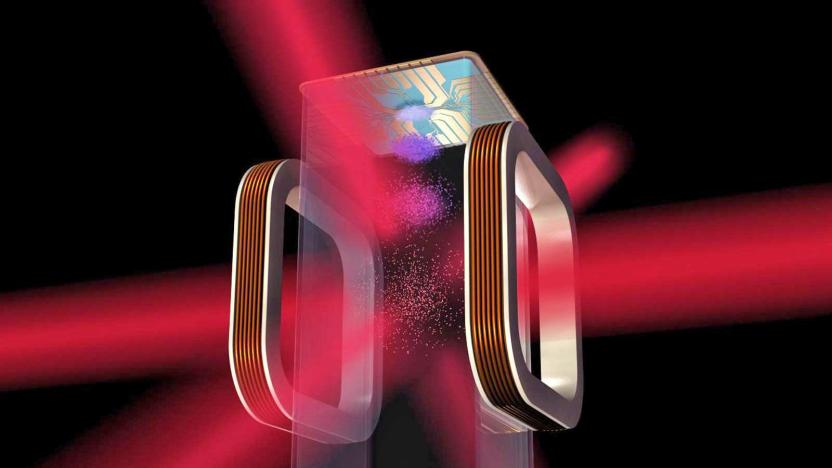
NASA will create coldest place in the universe to study quantum physics
It's hard to study quantum behavior on Earth. You can amplify the effects of quantum mechanics by zapping groups of specific atoms (Bose-Einstein condensates) with lasers that drop their temperature to near absolute zero, but that only works for fractions of a second before gravity invariably takes over. NASA's solution? Create the coldest known place in the universe. The agency just launched the Cold Atom Lab, a box that takes advantage of microgravity aboard the International Space Station to keep condensates in that ideal state for much longer.
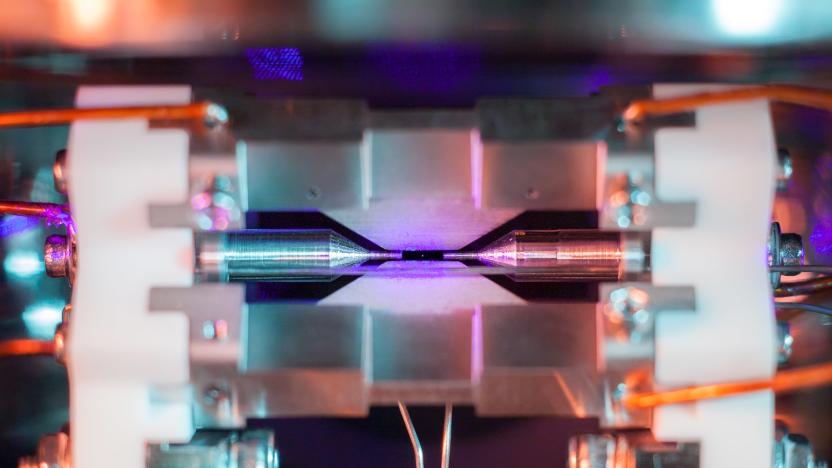
A 'trapped' atom is visible to the naked eye
The tiny dot in the center of the screen, between the two metal electrodes, is the light emitted by a single atom. The photo, Single Atom in an Ion Trap, just won the grand prize in the UK's Engineering and Physical Sciences Research Council (EPSRC) science photo and imaging contest. "The idea of being able to see a single atom with the naked eye had struck me as a wonderfully direct and visceral bridge between the miniscule quantum world and our macroscopic reality," said Oxford University quantum physics professor David Nadlinger, who took it.

World's quickest laser pulse can track electrons in slow motion
The race to produce ever-faster laser pulses has set a new record, and it could lead to breakthroughs in our understanding of atom-level physics. A team at ETH Zurich has shortened an X-ray pulse to just 43 attoseconds (10-18 seconds), which is quick enough that you can observe electrons moving in slow motion. That, in turn, makes it realistic to study extremely fast processes, such as the formation of chemical bonds or the creation of electricity in solar cells.
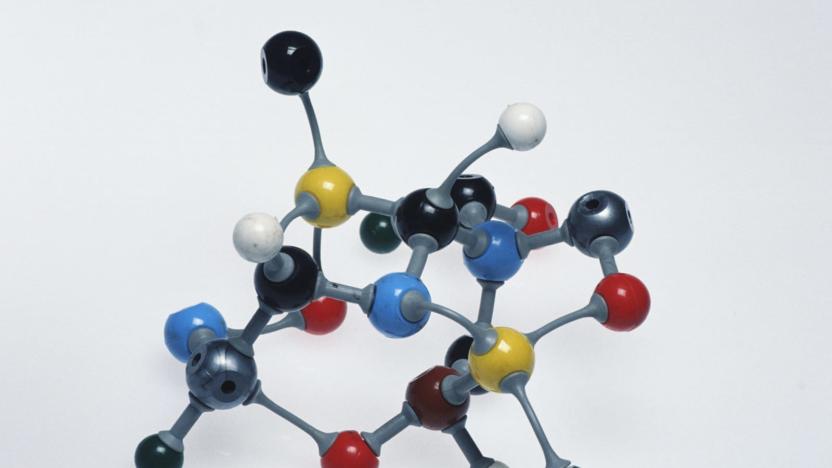
IBM's simulated molecule could lead to drug and energy advances
IBM's quantum computer has made a small advance that could ultimately lead to a major chemistry breakthrough. A team of IBM researchers has successfully used IBM Q to accurately simulate the molecular structure of beryllium hydride (BeH2), the largest molecule ever to be simulated by a quantum computer to date. This is pretty important, because simulating any molecule on a quantum level is no easy task, never mind a big one.

Ariel's electric supercar promises 1180 horsepower
No sooner had rumors started circulating that car manufacturer Ariel had something special in the works than the company came out and confirmed it was true. An electric supercar with more than 1000 horsepower is on its way, and fittingly for a vehicle capable of such impressive speeds, it'll be arriving soon, unveiled fully in 2019 and on sale in 2020.
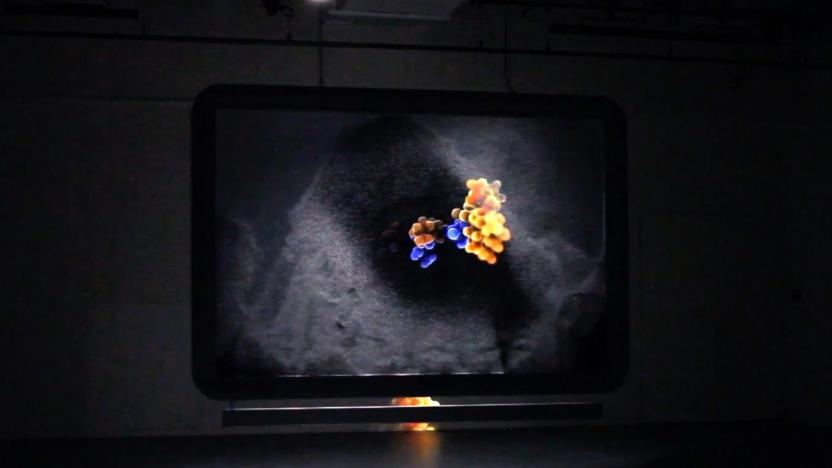
Bead screen depicts atomic life in glorious low resolution
In an era where virtually flawless 8K screens are a reality, it's easy to forget that low-resolution displays have their own appeal -- a flickering tube TV can exhibit more character than most modern sets. And a team of artists and scientists (at France's Millimètre and Harvard University) are taking full advantage of that emotional pull. Their Life in Picoseconds exhibit uses an "Atom Screen" made of thousands of beads to depict a protein molecule in a purposefully low resolution. The project uses 70 software-guided fans to suspend beads between plastic panels, turning them into pixels when you shine light on them. The effect is fuzzy, jittery and tenuous, as if the energy and fragility of the atoms is reflected in the display itself.
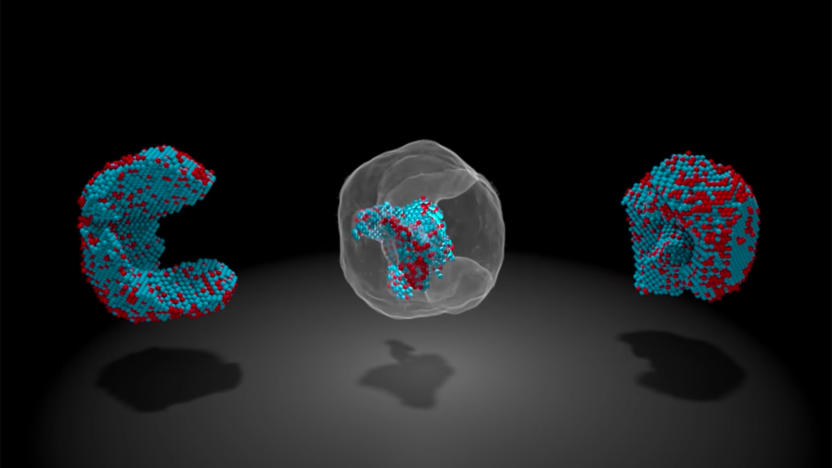
Scientists map every atom inside a nanoparticle
Even the smallest defects can create serious problems. It's a good thing, then, that researchers have found a way to map nanoparticles at an "unprecedented" level of detail -- they've located the 3D positions of all 23,000 atoms in an iron-platinum particle. The group used an extremely high-resolution transmission electron microscope (TEAM I) to capture 2D projections of the nanoparticle's structure, and used an algorithm to stitch those together into a 3D reconstruction. If there's a missing or misplaced atom, you could easily spot it.

Stanford students discover how to build wires like Lego
Scientists at Stanford University and the Department of Energy have developed a way to make incredibly thin wires with extraordinary properties. Using diamondoids -- the smallest possible pieces of diamond -- the researchers have been able to build electrical wires that measure just three atoms wide. Thanks to their microscopic size, these remarkably thin wires have the potential to be used to make fabric that conducts electricity without energy loss.

Physicists learn how to measure antimatter
As you might guess, measuring antimatter is rather tricky: it's destroyed the moment it comes into contact with regular matter, so conventional approaches just aren't going to cut it. Give credit to CERN, then, as its Alpha group just measured antimatter for the first time. The team stuffed positrons (positively charged electrons) and antiprotons (protons with a negative charge) into a vacuum tube to create antihydrogen, with a "magnetic trap" keeping a small number of the anti-atoms in existence for long enough to measure them. The team then blasted the antimatter with a laser to study its positrons as they shifted energy levels, producing a spectral line.

Intel's Apollo Lake chips promise slimmer, beefier budget PCs
Intel's Atom-based processors have gotten much better at delivering a lot of bang for the buck, but there's still little doubt that you're using a low-cost system. PCs like HP's Stream series still tend to be thick, carry a meager amount of RAM and rule out intensive tasks like 4K video. You might not have to make quite so many sacrifices going forward, though: Intel has offered a peek at Apollo Lake, a next-generation system-on-a-chip that promises to inject some life into the budget category. It's not only more compact, but efficient enough that PC makers can afford to slim things down without as many compromises -- they can use smaller batteries without hurting battery life, for instance. The more inclusive design (should also save several dollars (around $5-7) in parts that can be rolled into more RAM, better displays and similar upgrades.

Drone racing is about to get cheaper and easier
Those cool videos from drone races may have tempted you at some point, but where do you start? Traditionally, you'd have to spend at least a couple hundred dollars on components, plus many more on a remote controller and a monitor or goggles. Not to mention the several hours needed for assembling the drone. Too much hassle? Don't worry, because RotorX is now offering its latest micro racing quadcopter, the RX122 Atom V2, either fully assembled or as a quick DIY kit that apparently takes less than 30 minutes -- not five to ten hours like the V1 -- to put together. Better yet, the ready-to-fly version can include a controller with a built-in monitor for a grand total of just $499 for the first 50 backers on Indiegogo, and then $549 for the next 200.

ASUS' optical zoom smartphone to hit the US next month
All good things take time, which is often the case with products coming from ASUS. In this case, we're looking at the ZenFone Zoom, the world's first modern smartphone to feature a camera with 3x optical zoom sans the protrusion (a homage to the Nokia N93, if you like). Exactly a year after its surprise unveiling at last year's CES, we bring you the good news that this quirky device is finally heading to the US in early February. The price? $399 off-contract, as originally intended. That's not bad given that unlike its closest competitor from Samsung, the ZenFone Zoom doesn't compromise its main specs and materials to make way for the expensive camera module.

FreedomPop is building a 'WiFi-first' smartphone with Intel
Budget carrier FeedomPop has signed a deal with Intel that will see it introduce a "WiFi-first" smartphone next year. The phone will use Intel's low-cost "SoFIA" Atom x3 processors and leverage WiFi hotspots wherever possible instead of mobile data, even for things like texting and calling. The phone will "seamlessly" switch between WiFi and cellular networks with no discernible difference to the user, and when it does connect to cellular it'll apparently be free. FreedomPop already offers a similar service -- its big selling point is that calls and texts are sent via mobile data or WiFi rather than traditional means -- but this will be the first phone purpose-built for its virtual network.

Physicists successfully map individual atoms in 3D
Technology can evolve at such a rapid rate that many scientific discoveries are not just pushing boundaries, they're practically barging them. Example, Physicists at UCLA have managed to 3D-map the position of individual atoms to a precision of 19 trillionths of a meter (that's several times smaller than a hydrogen atom, for those of you playing at home) using a creative scanning technique. The method will help scientists and engineers build things -- such as aircraft components -- that lack point defects (i.e. missing atoms) that can have detrimental effects on structural integrity.

Google is launching a new version of Glass, but only for workers
Good news, wearable fans: there's a new version of Google Glass on the way. Only... it's not really meant for you. Both Recode and the Wall Street Journal hear that Google is handing out a new, work-oriented version of its smart eyepiece to its enterprise partners' development teams. As for what it entails? Like 9to5Google hinted earlier, its a mix of performance and accommodating the demands of the working world. There's a hinge to attach it to different glasses, and the wider, thinner prism (aka the display) can move both vertically and horizontally. It also touts a faster Intel Atom processor, better wireless and longer-lasting battery packs that attach to the headset through magnets.

Atom is a new UK bank that'll have no branches, just apps
Banking is a bit of an old boys' club dominated by a few huge, lumbering corporations, but up-start Atom thinks it's time for a new player with a different approach. Atom wants to take mobile banking seriously; so seriously, in fact, that it aims to exist almost solely as a mobile app. The company has just been granted a UK banking licence and plans to launch later this year, first using mobile apps to offer its services before graduating to desktops in due course. Atom will have a 24-hour support team available by phone, email, webchat and social networks, but the idea is you can do everything, even open an account, from within the mobile app.









